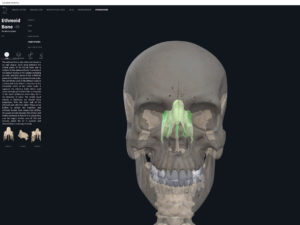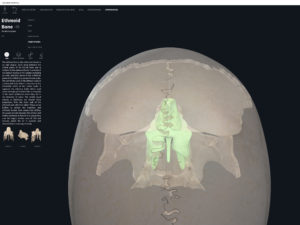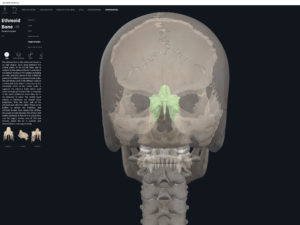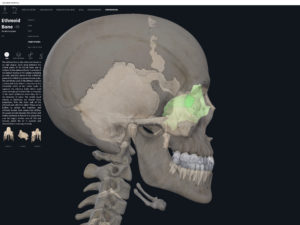Anatomy & Physiology: Bones—Skull, Ethmoid Bone.
Structure.
- Forms part of the anterior cranial floor and is a slender bone “wedged” midsagittally between the orbits (forms the medial wall of the orbits); transversely between the frontal and sphenoid bones; and posterior to the nasal bones thus forming part of the nasal septum and the nasal side walls.
- The name “ethmoid” means a sieve, sponge-like.
- Cribriform plate: forms the roof of the nasal cavity and contains the olfactory foramina where scents/smells get transmitted to the brain.
- Crista galli: superior to the cribriform plate, triangular shaped. It is an important landmark because it is an attachment point for membranes separating the two halves of the brain.
- Perpendicular plate: inferior to the cribriform plate, and forms the upper part of the nasal septum.
- The ethmoid contains 3-18 “air spaces”. These are called the ethmoidal sinuses.
Function.
- Superior and middle nasal concha: scroll-like formations on either side of the ethmoid. The concha increase surface area and helps “swirl” the air (create currents); warm and moisten the air; and helps to “clean” the air as foreign particles might stick to the mucous.
Clinical Significance.
References
Biel, A. (2015). Trail guide to the body: A hands-on guide to locating muscles, bones and more.
Jenkins, G., & Tortora, G. J. (2012). Anatomy and Physiology: From Science to Life, 3rd Edition International Stu. John Wiley & Sons.
Muscolino, J. E. (2017). The muscular system manual: The skeletal muscles of the human body.




